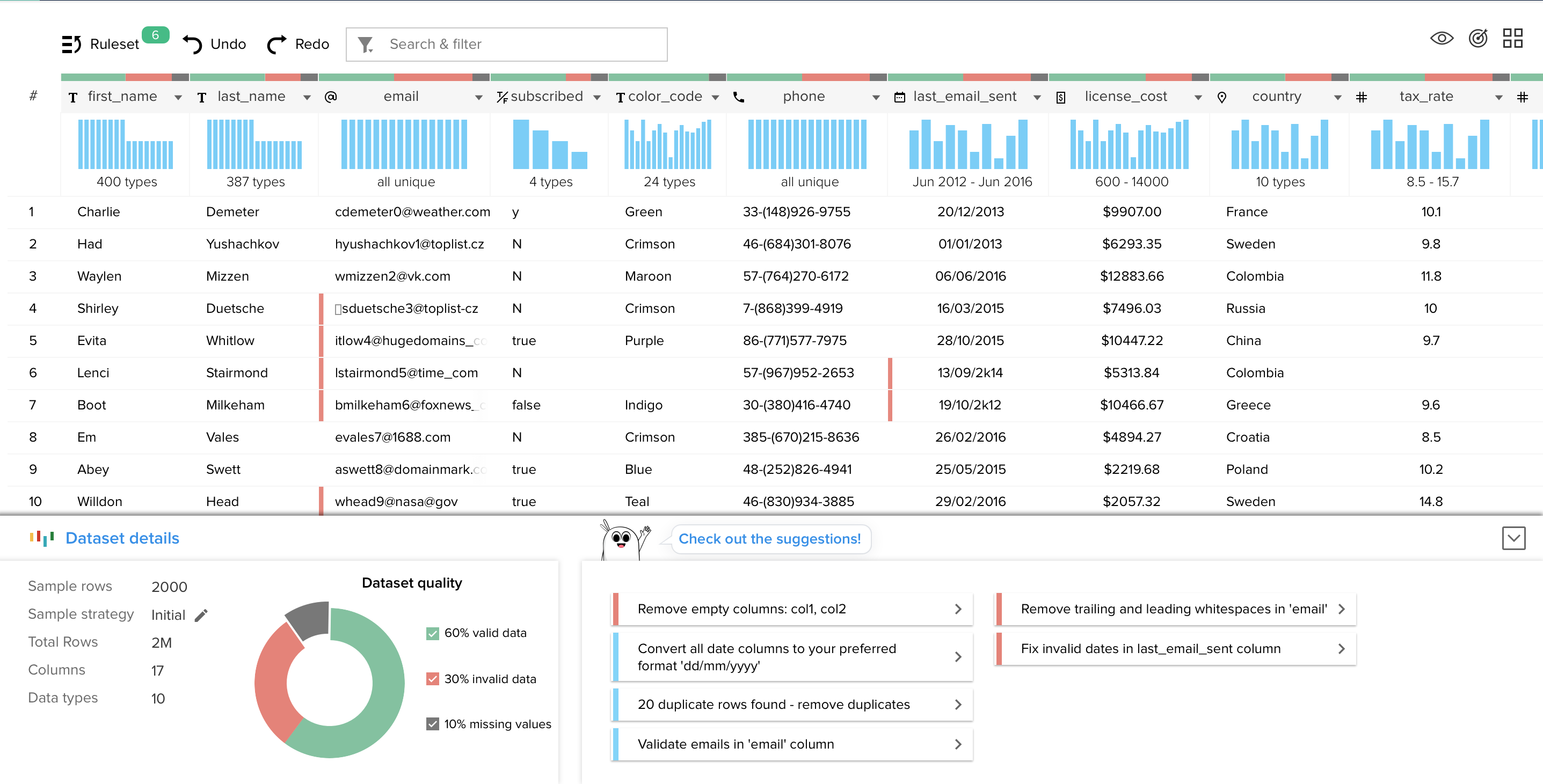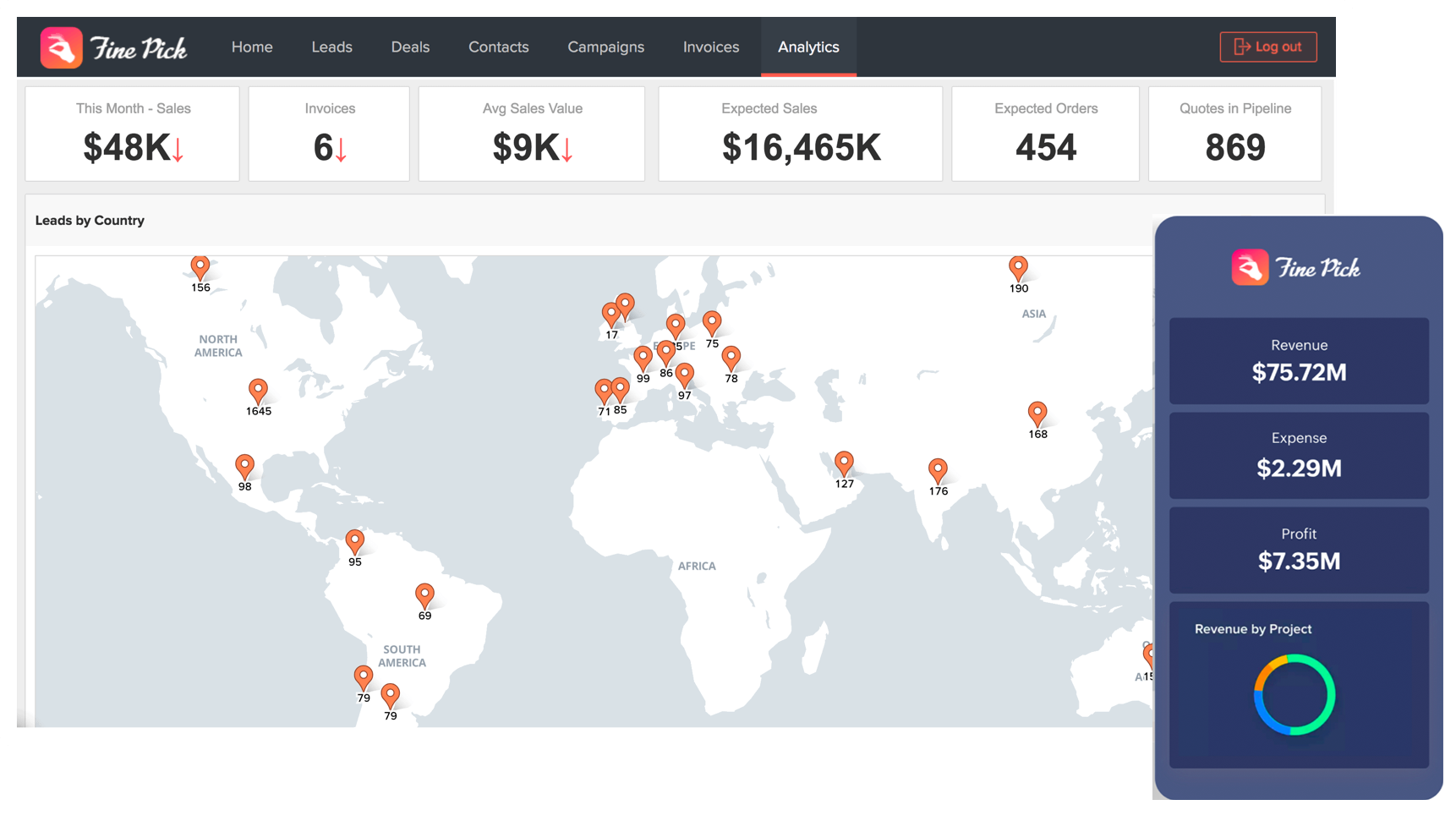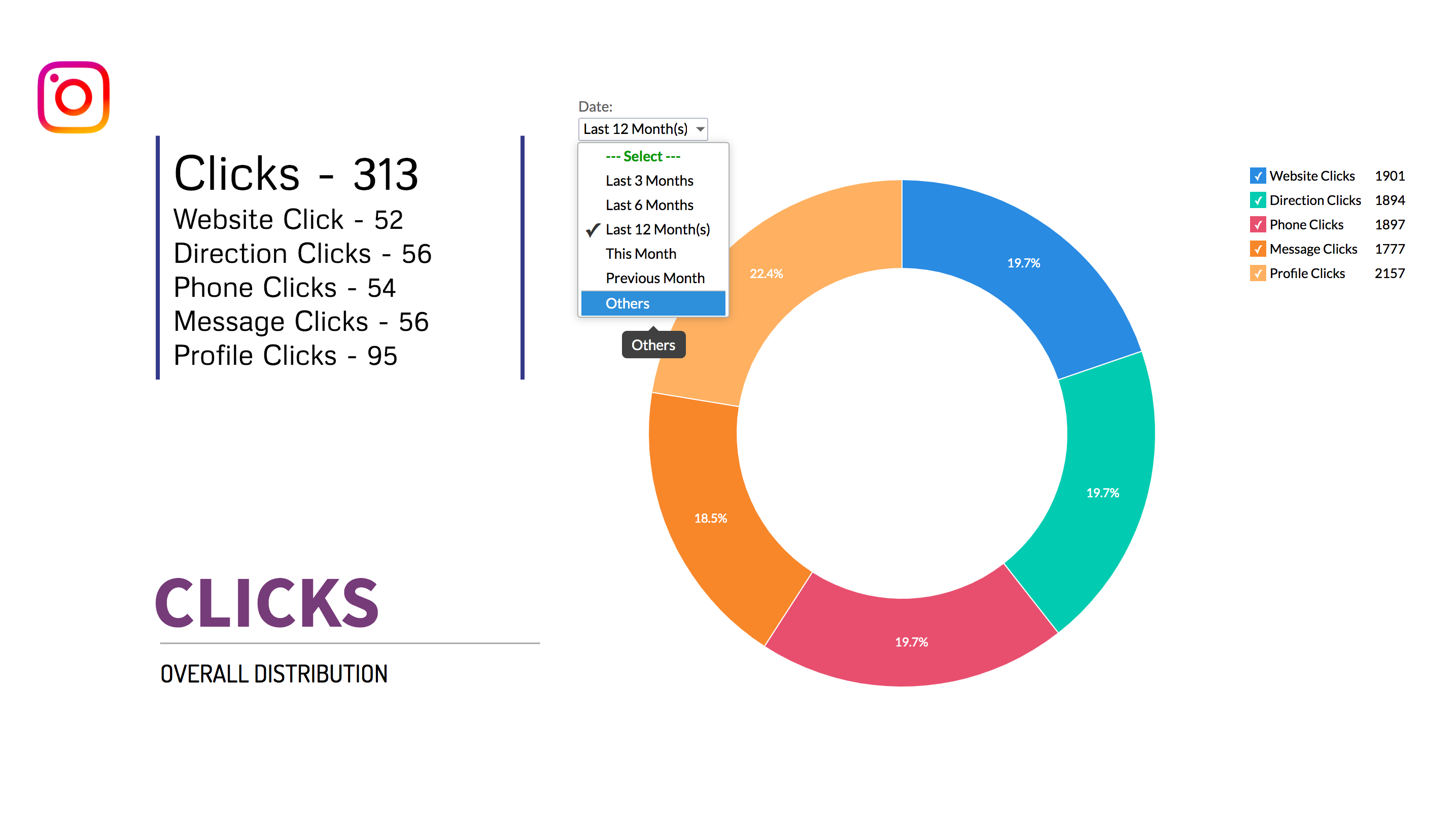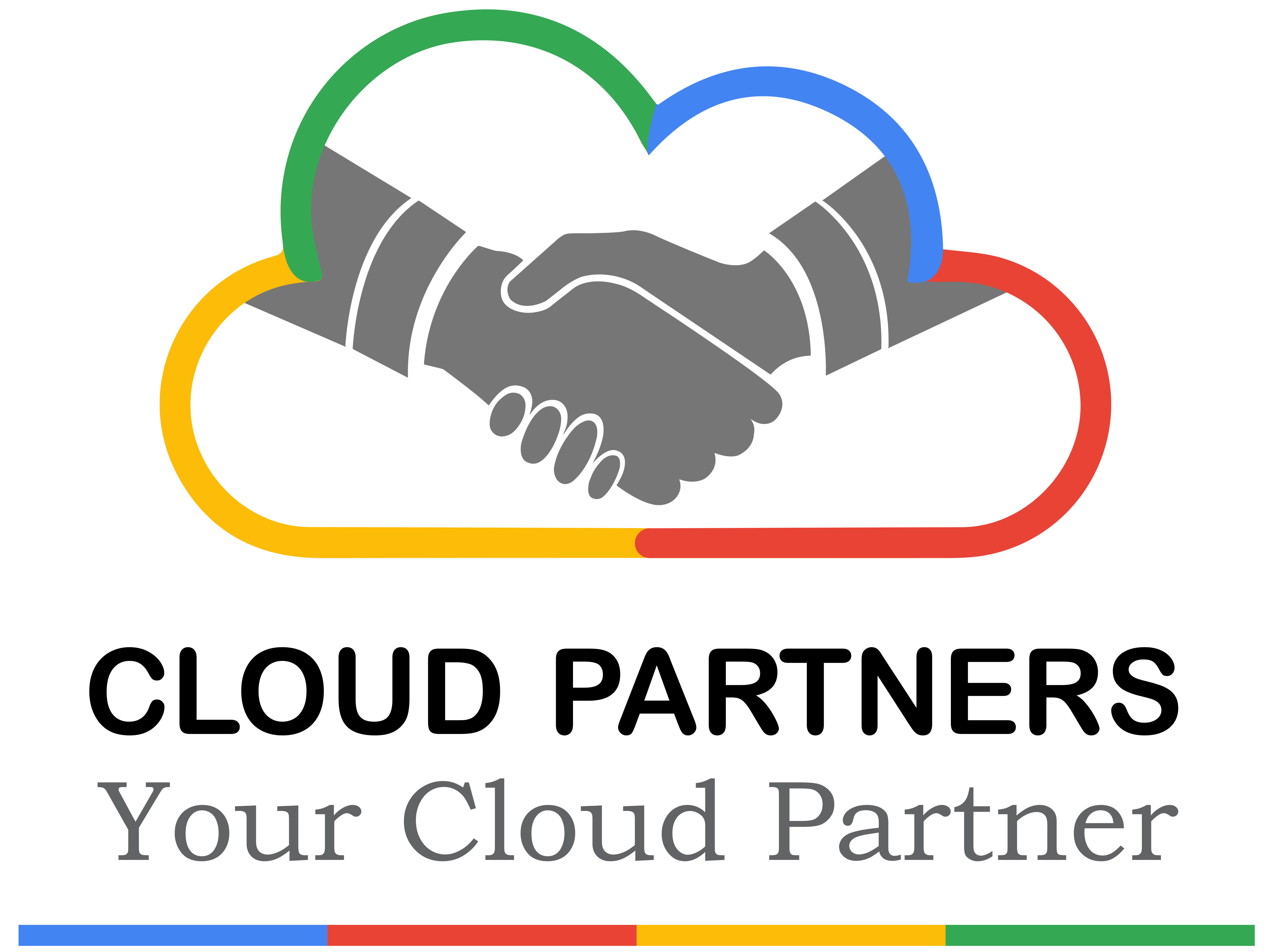
Top 7 BI Trends To Watch In 2021
The overall analytics and BI software market grew by 10.4%, to $24.8B, in 2019, according to research by Gartner, with modern BI platforms continuing to grow at 17.9%. These figures clearly show the increasing importance of data-driven decisions across businesses worldwide.

2020 witnessed the continuing rapid adoption of analytics across an even wider spectrum of businesses. Apart from companies that just kick-started their analytics journey, the onset of the pandemic drove the public to begin consuming data and analytics as the entire world kept a close watch on various COVID-19 metrics.
Considering the events of 2020, companies must firm up their business strategy for 2021 and the years to come. At Zoho Analytics, we’ve put together a list of the top 7 BI trends for 2021 to help you chalk out your data and analytics strategy going forward.
1. Augmented data preparation
The quest for precise data discovery and analytics is never-ending, and it’s estimated that nearly 80% of analysis time is spent on data preparation. That’s probably why data preparation is consistently featured as a key analytics trend every year.
Once data quality and derived metrics are in place, visualizations become simple for users. To facilitate this, BI vendors are implementing ML and AI capabilities across the data preparation workflow. It simplifies the process of integrating, modeling, cleaning, preparing, enriching, and organizing data.
With automation and intuitiveness being enhanced in the data preparation layer, self-service data preparation is increasing as well. This lowers the entry barrier for businesses by empowering users with little or no technical know-how to prepare data effectively for precise analytics. Here’s a quick example of how this works:

2. Consolidation of data management and analytics stacks
The increased interaction and collaboration between data management and analytics stacks is heading towards the consolidation of the two. It’s no longer a separate ETL and analytics layer, but rather, data management is becoming a part of the analytics workflow. Although technically they may be two different stacks behind the scenes, they can work together to offer a seamless analytics experience for users.
The growing criticality of data governance is also fuelling the consolidation of data management and analytics stacks. With data stored across multiple places for analysis, a substantial amount of effort goes into maintaining and managing data with access controls, permissions, and a lot more. Consolidating stacks can help businesses overcome a large portion of these setbacks.
With data management and analytics stack consolidation on the rise, analytics is becoming more democratized by making most of the elements of an analytics workflow available under one roof.
3. Natural Language Processing
The width and depth of decision-making in an organization is rapidly expanding and deepening. Decisions are being made at all levels. To make those decisions better, businesses are consciously promoting a culture of data-driven decisions across organizations, and Natural Language Processing (NLP) is the secret ingredient.
Without having to understand the complex data models and relationships, users can simply ask the platform questions in natural language and get answers on the go.
NLP technology is further evolving in the form of immersive conversations where users can continuously converse with the platform and get contextual insights in return. NLP is also advancing towards supporting a myriad of languages, making analytics and BI even more self-serviceable and available to users.

4. Real-time analytics
In today’s increasingly tech-heavy world, data is produced in massive quantities across diverse sources. To instil efficiency into analytics workflows, it’s crucial to have an analytics engine that’s closer to the data source. This can enable it to analyze the continuous influx of data being generated in real time.
Advanced technologies, such as Artificial Intelligence, Machine Learning, data mining, and automation are paving the way for truly real-time analytics, where the data that gets generated is processed and analyzed as it happens. Based on the intelligence built into the platform, alerts or automated events can be triggered and delivered in context, across a wide range of channels.
Given the current need for instant insights and actions, real-time analytics is gaining ground across sectors.
5. Cloud BI
With more make-shift offices spreading across the globe, propelled by the pandemic, cloud BI has become a de facto for many companies. Analytics anywhere and at any time can be easily achieved with cloud BI.
Many businesses were quick to understand the extensive mobile capabilities of cloud BI, putting it to work across the organization because it’s quick and easy to set up and requires zero technical knowledge. The flexible licensing model that cloud BI platforms offer also enabled businesses to optimize their analytics investments during the pandemic.
Legal and security practices, and privacy and trust issues which were once synonymous with the cloud are being addressed systemically. With more businesses adopting cloud BI as the way forward, cloud BI vendors are also beefing up their security to meet industry standards and business expectations.
6. Embedded BI
The availability of contextual insights for real-time decision-making is also contributing to the adoption of embedded BI. Apart from Independent Software Vendors (ISVs) embedding analytics into their apps, the need for analytics across operational apps is on the rise.
Embedded BI plays a crucial role in closing the information-to-action loop and saves time and resources for the business. With contextual insights, users can make decisions and act on the insights, thereby closing the loop at an operational level. Automated decisions and actions can be triggered from the parent app based on the analysis and insights from the BI platform embedded into the parent app.

Plus, the advancements in low-code, no-code (LCNC) deployment models is further enabling quick and easy embedding of BI into any application. We can expect some interesting updates in this area in 2021.
7. In-context data stories
The widening spectrum of data and analytics consumers is forcing BI vendors to reimagine data storytelling. Data and analytics need to be presented in more compelling, digestible, and impactful ways, which is leading to the emergence of in-context data stories.

BI vendors will be innovating ways to build data stories with zero technical know-how, to serve analytical insights to a wider audience. With more and unique analytical requirements on the rise, dynamic data stories, with more automated and consumerized experiences, will be the way forward for businesses.
Companies will also be able to stream real-time insights based on content, role, and use. These innovations will put more analytical insights into the hands of a larger set of business users for making more meaningful business decisions.
https://zoho.maillist-manage.com/ua/Optin?od=11287eca327b69&zx=1298a2337&lD=1748fc5f8909&n=11699f75099894d&sD=17494674b3f5
Summary
The unprecedented market shift in 2020 drove businesses and consumers to a mass digital exodus that further fuelled data generation across diverse sources at a striking scale and speed.
To mitigate the pandemic, most of our businesses were quick to adopt new technologies which caused an explosion of data. A robust BI platform is the key to transforming this data into meaningful business actions.
As one of the earliest adopters of all these technologies discussed above, Zoho Analytics is an active contributor to this purpose. We’ve always aligned our investment and resources with these trends, and you can expect some exciting updates from us throughout 2021!
Sign up for a free Zoho Analytics account today.
Watch our video on the top 7 BI trends in 2021!
post :- zoho.blog.com


0 comments